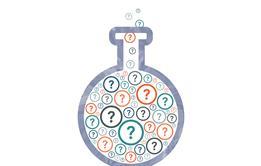Test alcohol the old-fashioned way - through science!
Students identify the nature of fake vodka, seized by the police, as ethanol or tert-butanol from its boiling point. The identity of the alcohol is then confirmed using standard test tube reactions (potassium dichromate and the iodoform test).
Pre-lab questions
(Remember to give full references for any information beyond A-level that you find out)
- Two liquids which are miscible can be separated by distillation. Draw a fully labelled diagram of the equipment you would use to carry out a distillation. Mark with an X the most accurate place to record the boiling point of the distillate (the solution you are collecting)?
- Find out the boiling points of the following alcohols and place them in order of increasing boiling point.
Explain the trend observed.
methanol; butan-1-ol; ethanol; glycerol (propane-1,2,3-triol); 2-methylpropan-2-ol
- Short chain alcohols such as ethanol are completely miscible with water. Draw a diagram to explain why.
- Describe a simple chemical test (or series of chemical tests) that can be used to distinguish between the following pairs of alcohols;
CH3CH2OH and CH3CH(OH)CH3
CH3CH(OH)CH3 and (CH3)3COH
CH3OH and CH3CH2OH
Equipment
Chemicals
- 30 cm3 ethanol and 20 cm3 glycerol mixed – labelled Sample A [Highly flammable]
- 30 cm3 tert-butanol and 20 cm3 glycerol mixed – labelled Sample B [Highly flammable, Harmful]
- Sodium hydroxide solution, 1 mol dm–3 [Corrosive – causes severe burns and eye damage]
- A solution of iodine in aqueous potassium iodide, 0.05 mol dm–3 [Low hazard]
- Potassium dichromate(VI) solution, 0.1 mol dm–3 [Toxic]
- Sulfuric acid, 2 mol dm–3 [Corrosive]
Apparatus
- Two sets of distillation apparatus; 100 cm3 round-bottom or pear-shaped flask
- Still head
- Thermometer (0-110 ◦C)
- Thermometer adaptor
- Condenser
- Condenser tubing × 2
- Receiver adaptor
- Small beaker for collection of distillate
- Anti-bumping granules
- Clamp stand, clamp and boss x 2
- Funnel
- Heat source (either micro burner or a suitable electric heater)
- Test tubes × 6
- Test tube rack
- Disposable pipettes
- 250 cm3 beaker and access to just-boiled water
- Disposable pipettes
Health, safety and technical notes
- Read our standard health and safety guidance.
- Wear eye protection.
- Wear clothing protection if desired.
- Ethanol is highly flammable, for more information see CLEAPSS Hazcard HC040a
- Glycerol may cause eye irritation, be harmful if inhaled, or be harmful if swallowed. See CLEAPSS Hazcard HC037a
- Butanol may cause headache, dizziness, and is harmful if swallowed. See CLEAPSS Hazcard HC084b
- Sodium hydroxide may be harmful to the eyes, skin, and respiratory system. Harmful if swallowed. See CLEAPSS Hazcard HC091a
- Iodine can cause skin irritation. See CLEAPSS Hazcard HC054
- Potassium iodide may cause skin, eye, and respiratory irritation. See CLEAPSS Hazcard HC047b
- Potassium dichromate may cause skin and respiratory irritation. See CLEAPSS Hazcard HC078c
- Sulfuric acid is corrosive and harmful to the skin and respiratory system. See CLEAPSS Hazcard HC098a
Put this in context
Watch the video of food and pharmaceuticals scientist, Taryn who describes her role in using scientific instruments to test our food and medicines and make sure they are safe.
Extension discussion points:
- What is the mechanism of the iodoform reaction?
- Why was it important that the samples had been freeze-dried and all water removed?
Downloads
Alcohol detective teacher & tech sheet
PDF, Size 0.3 mbAlcohol detective student sheet
PDF, Size 0.15 mb
Additional information
This resource was developed by Catherine Smith, RSC School Teacher Fellow at the University of Leicester 2011 – 2012, produced as part of the National HE STEM Programme.

Problem based practical activities

Discover how chemistry can relate to real world problems, so students can put their science knowledge into context.
- 1
- 2
- 3
- 4
 Currently
reading
Currently
reading
Alcohol detective
- 6
- 7
- 8
- 9
- 10
- 11











































No comments yet